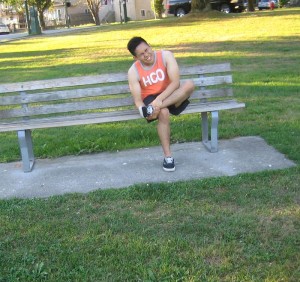Metatarsalgia is an injury also known as stone bruise. The inflammation, pain and swelling are usually felt on the metatarsals of the foot (commonly known as balls of the foot), including its joints and bones. Metatarsals are the small, round bones in the foot below the big toe and two middle toes. Although the largest metatarsal under the big toe is commonly affected, other smaller bones can also suffer from stone bruise.
Who Are Commonly Affected By This Injury?
People engaged in extreme physical activities with too much use of the foot are the ones who usually suffer from metatarsalgia. Athletes (particularly runners and gymnasts), who perform high impact jumping, running and twisting of the foot, are more likely to experience this kind of overuse injury. However, there are times when tight-fitted shoes or underlying medical condition can also cause metatarsalgia. Metatarsalgia is also common among male athletes, but middle-aged females, who usually wear high-heels, can also suffer from this condition.
The pain felt on the foot vary depending on the severity of the pressure or impact received by the foot; sometimes only a portion of the foot feels the pain, but there are instances when the entire foot is affected. When too much weight is put on the foot, it can worsen the symptoms of metatarsalgia – such as when walking, prolonged standing, running, or high-jumping.
What Are The Warning Signs Of Metatarsalgia?
- Pain ranging from mild to severe
- Different pain characteristics – burning, sharp, aching, localized on a part of the foot or generalized on the entire foot
- Increasing pain severity when walking, standing, or moving about
- Diminishing pain when weight is removed from the foot, such as when sitting or lying down

These symptoms usually vary from one person to another. In addition, they may either develop abruptly or slowly, depending on the activities and weight received by the injured foot.
First Aid Options For Metatarsalgia
- Rest can help relieve pain and relax the foot from overuse
- Ice application can help decrease swelling and minimize pain
- Avoid too much work, pressure or exercise on the foot if pain is already noticed on the metatarsals
- Pain relievers may be prescribed if pain is intolerable.
- When to Seek Medical Care? If the pain does not subside after a couple of days rest or the foot becomes more swollen even after taking medications. There may be underlying reasons for the injury so it is important to seek medical supervision as soon as possible.
Related Video On Metatarsalgia:
[youtube url=”https://www.youtube.com/watch?v=f_1x4cbDGFk” width=”220″]Sources:
“Metatarsalgia Introduction.” Web MD. Retrieved online on August 18, 2014 from http://www.webmd.com/a-to-z-guides/metatarsalgia
“Metatarsalgia Definition.” Mayo Clinic. Retrieved online on August 18, 2014 from http://www.mayoclinic.org/diseases-conditions/metatarsalgia/basics/definition/con-20022369